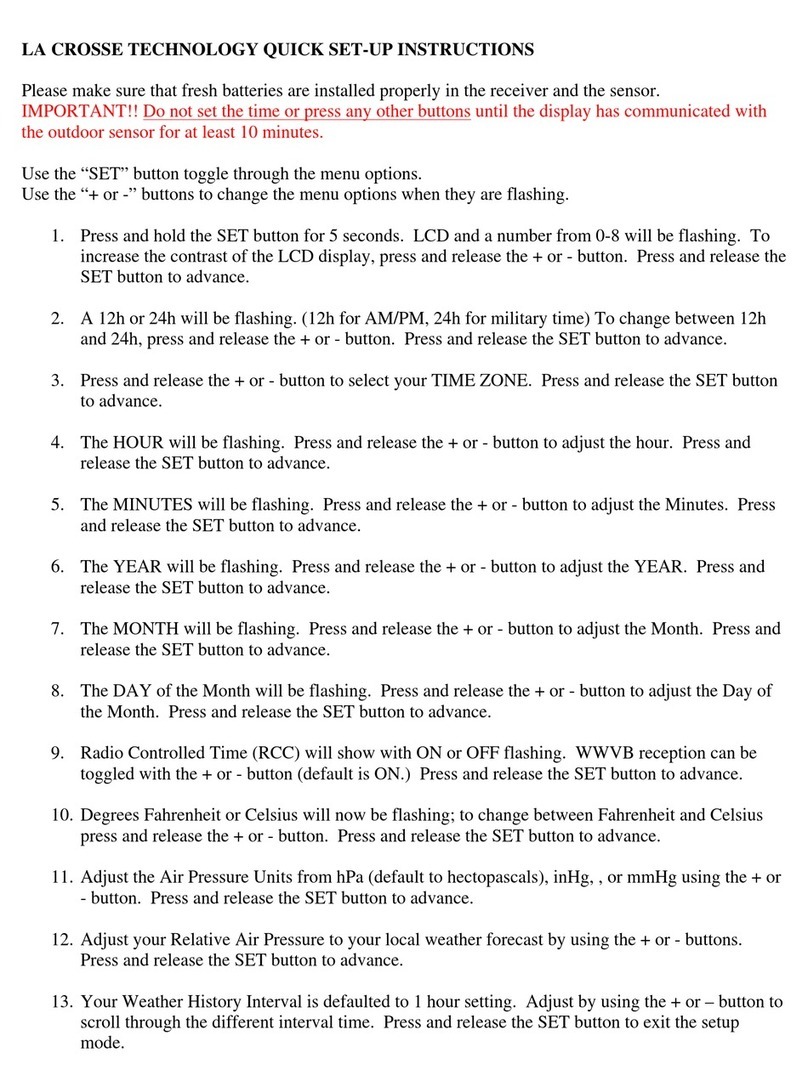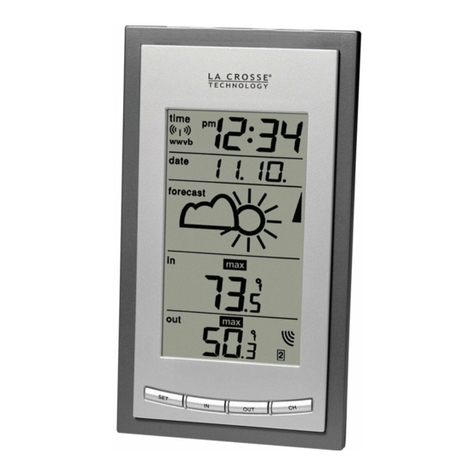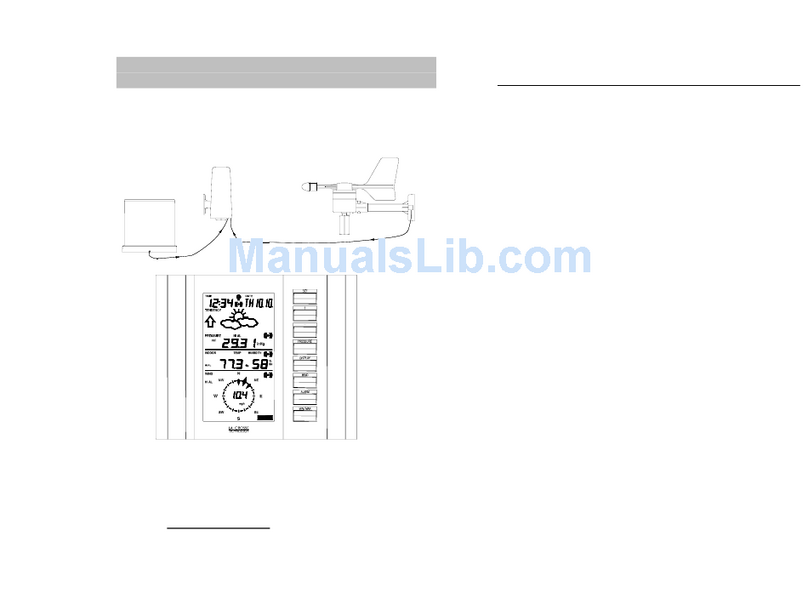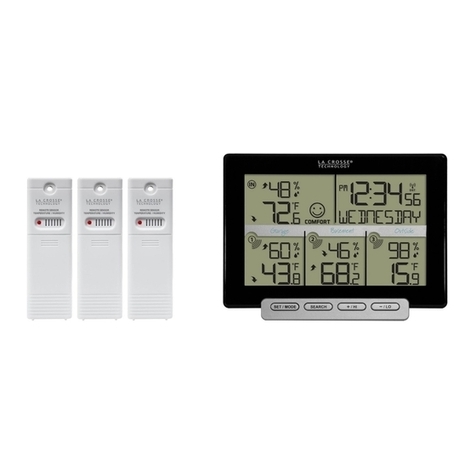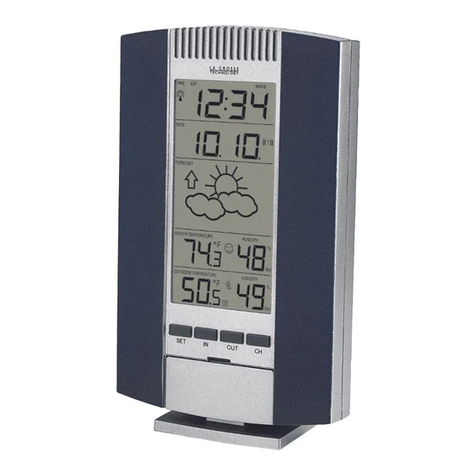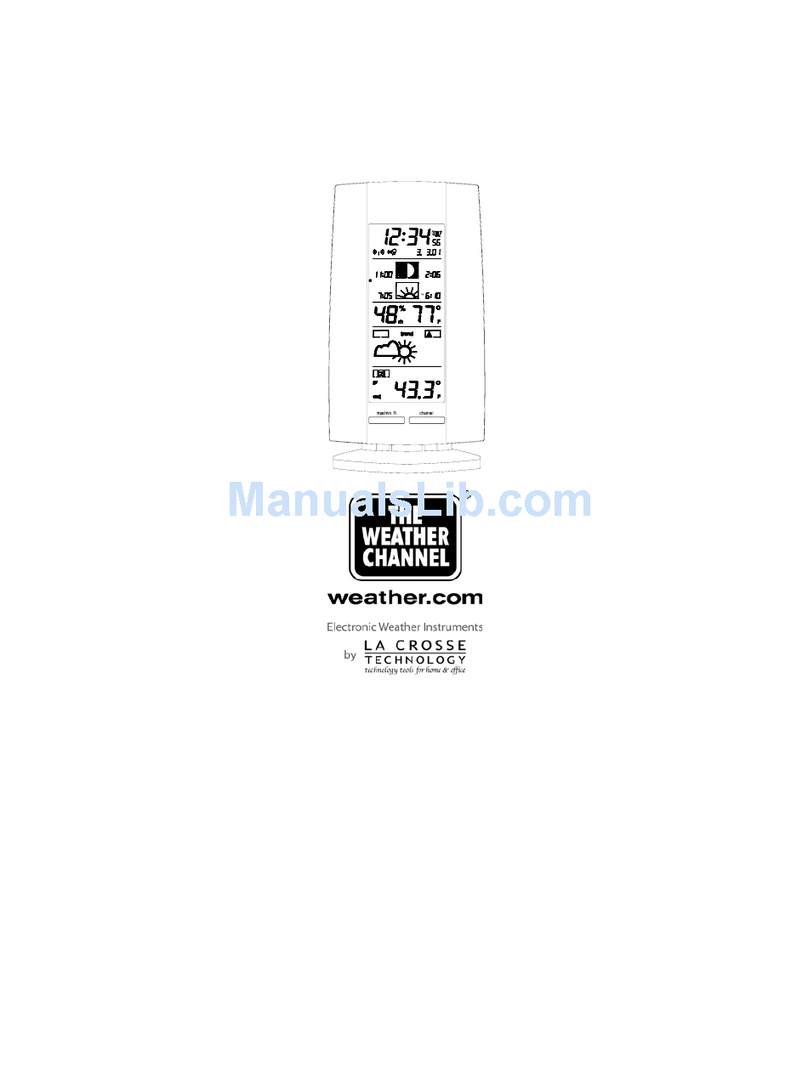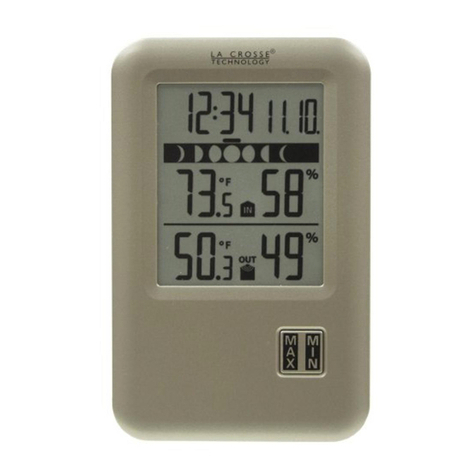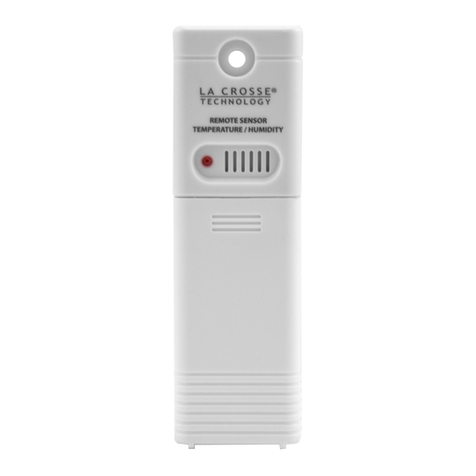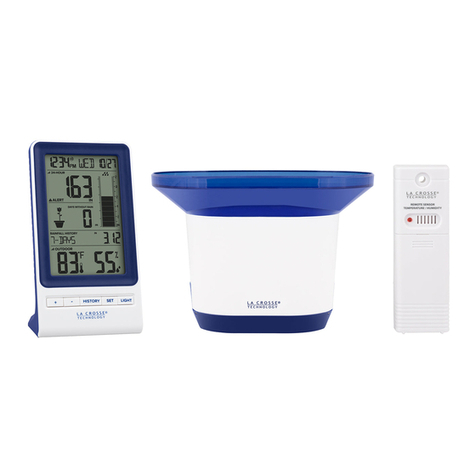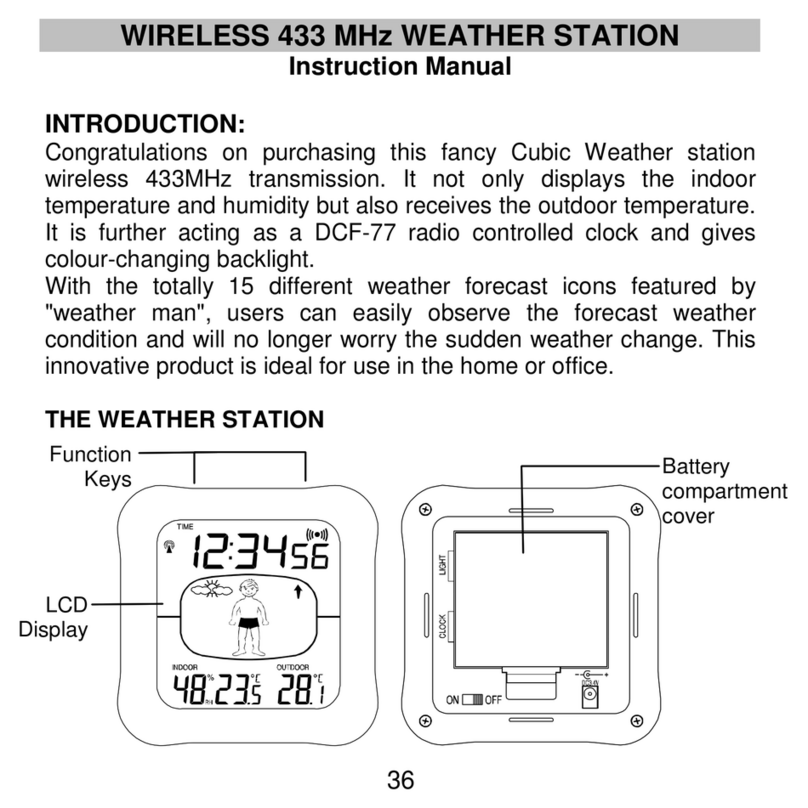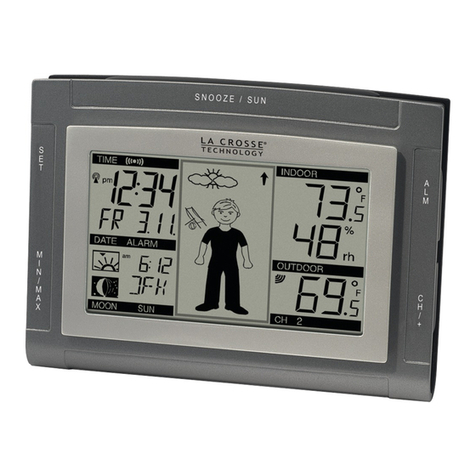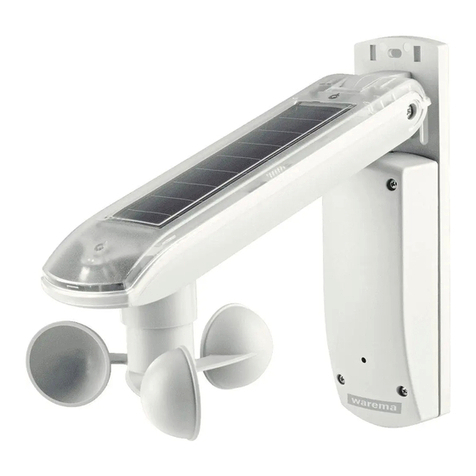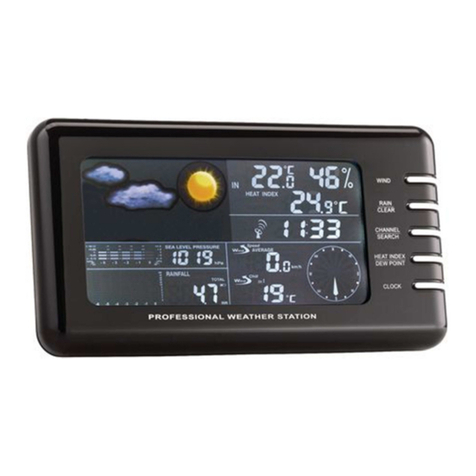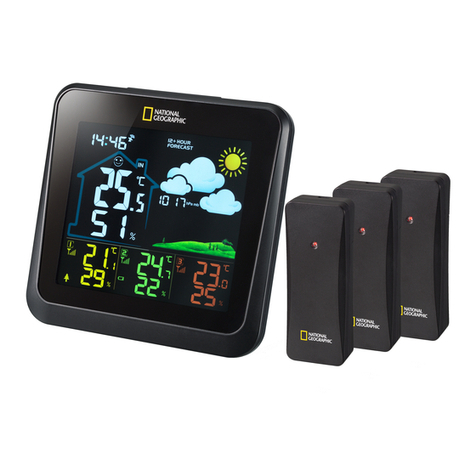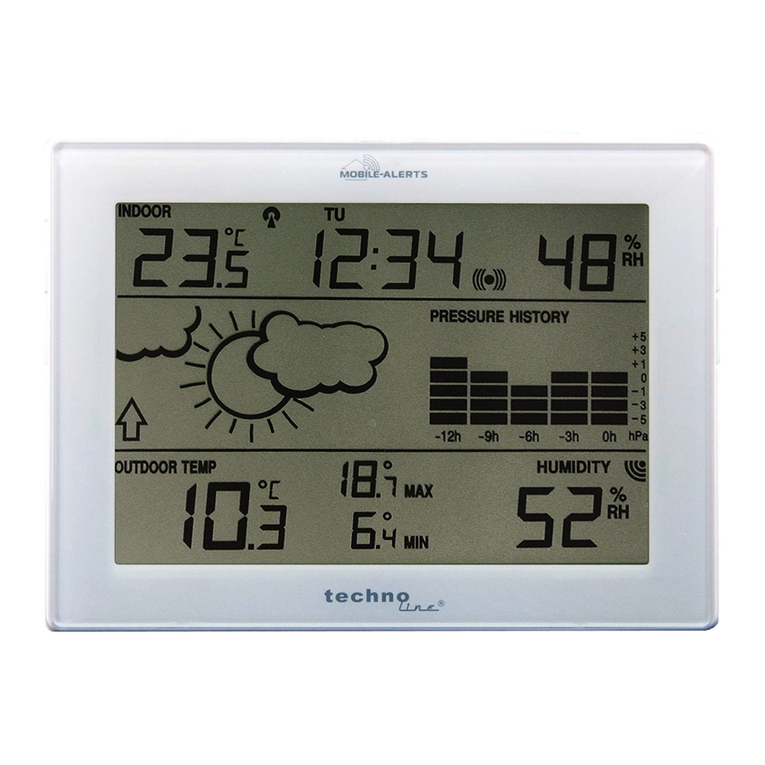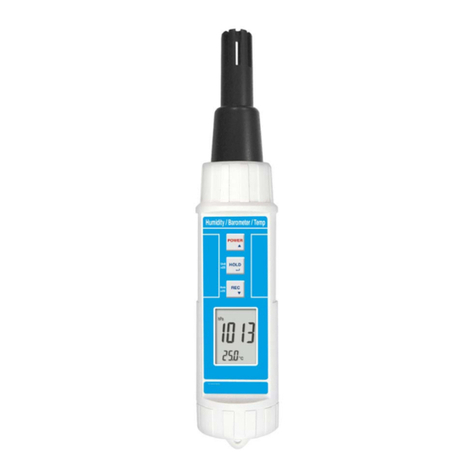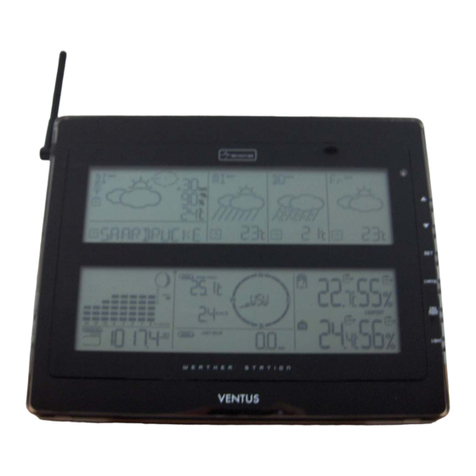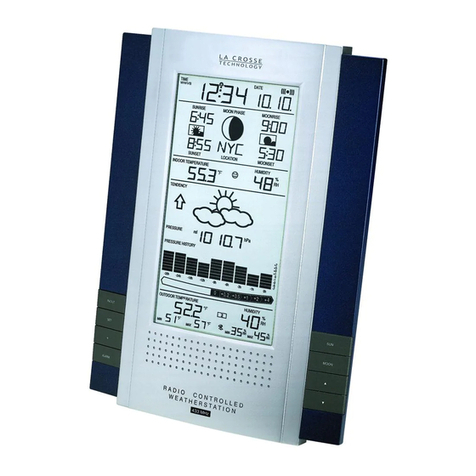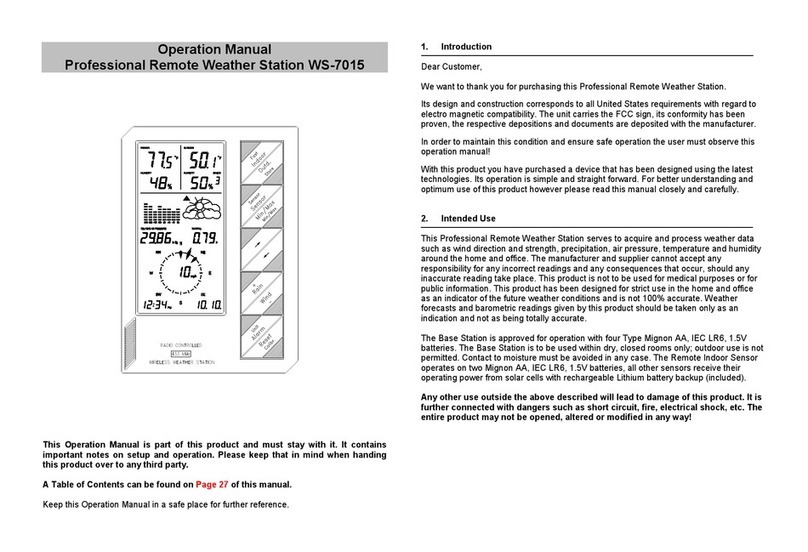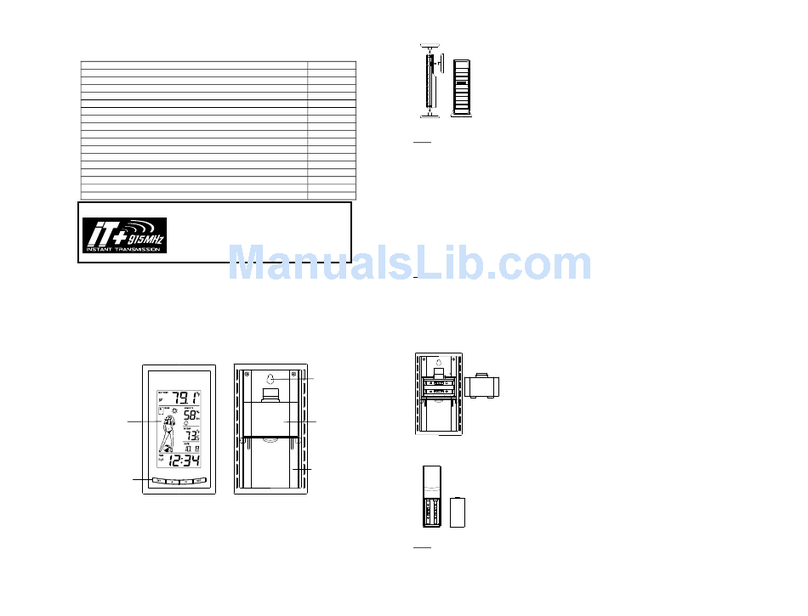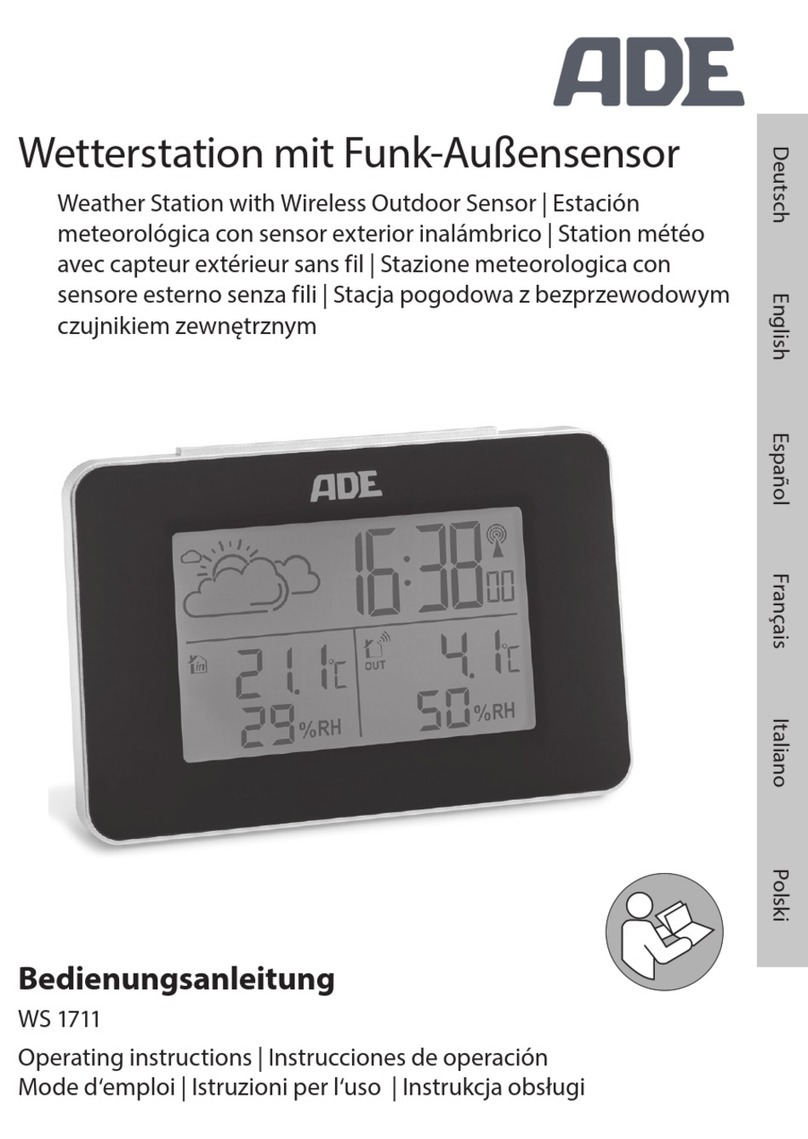
8
4. Afterwards, the Weather Center will start receiving data from the sensor. The
outdoor temperature, humidity wind chill and wind speed should then be
displayed on the Weather Center. If this does not happen after 30 seconds, the
batteries will need to be removed from both units. You will have to start again
from step 1.
5. You may then check all cables for correct connection and all components for
correct function by manually turning the wind-gauge, moving the weather-vane,
tilting the rain sensor to hear the impact of the internally moving seesaw, etc
(See Positioning below).
6. Time and date shall be manually set (See Manual Setting below).
7. After the Weather Center has been checked for correct function with regard to
the above points and found fit, the initial set up of the Weather Center system
is finished and the mounting of the system components can take place. It must
be verified, however, that all components work properly together at their
chosen mounting or standing locations. If e.g. there appear to be problems with
the 915 MHz radio transmission, they can mostly be overcome by slightly
changing the mounting locations.
Note:
The radio communication between the receiver and the sensor in the open field
reaches distances of max 330 feet, provided there are no interfering obstacles such
as buildings, trees, vehicles, high voltage lines, etc.
8. Radio interferences created by PC screens, radios or TV sets can in some
cases entirely cut off radio communication. Please take this into consideration
when choosing standing or mounting locations.
Note:
9
The thermo-hygro sensor should be placed in a dry, shaded area. The temperature
sensor has a range of 330 feet. Keep in mind that the 330 feet is in open air with no
obstructions and that radio waves DO NOT curve around objects. Actual transmission
range will vary depending on what is in the path of the signal. Each obstruction (roof,
walls, floors, ceilings, thick trees, etc.) will effectively cut signal range in half.
Example: A Professional Weather Center with a 330 feet range is mounted on an
interior wall, so that the signal has to pass through one interior wall, one exterior wall,
and across the 10 feet width of the room between the 2 walls. The first wall will
reduce the range to 165 feet, and the second wall will reduce the range to 87 feet.
Factoring in the 10 foot room, this leaves a maximum of 77 feet of remaining signal
range.
This allowance is typically enough for a frame wall with non-metallic siding; however
certain materials can reduce range even further. Metal siding, stucco, and some
types of glass can reduce signal range by as much as ¾ or more, compared to the ½
reduction typical of most obstructions. It is possible to receive a signal through these
materials, however maximum range will be much less due to their tendency to absorb
or reflect a much larger portion of the sensor’s signal.
Note :
•After batteries are installed in the sensor, install the batteries in the Weather
Center to receive the signal from the sensor as soon as possible. If the
Weather Center is powered more than 5 hours after the sensor is powered, the
Weather Center will never receive signal successfully from this sensor. In this
case, user will need to reinstall the batteries from the sensor to redo set-up
procedure.
10
•After batteries are installed, there will be synchronization between Weather
Center and the sensor. At this time, the signal reception icon will be blinking.
When the signal is successfully received by the Weather Center, the icon will
be switched on. (If it is not successful, the icon will not be shown in LCD) So
the user can easily see whether the last reception was successful (icon on) or
not (icon off). On the other hand, the short blinking of the icon shows that a
reception is in progress.
•If the signal reception is not successful on the first frequency (915MHz) for 14
seconds, the frequency is changed to 920MHz and the learning is tried another
14 seconds. If still not successful the reception is tried for 14 seconds on
910MHz. This will also be done for re-synchronization.
HOW TO INSTALL AND REPLACE THE BATTERIES INTO THE WEATHER
CENTER
The Weather Center works with 3 x AA, IEC LR6, 1.5V batteries. When the batteries
need to be replaced, the low battery symbol will appear on the LCD.
To install and replace the batteries, please follow the steps below:
Sensor signal reception
icon
11
1. Remove the battery compartment cover.
2. Insert the batteries observing the correct polarity (see
the marking in the battery compartment).
3. Replace the battery cover.
HOW TO INSTALL AND REPLACE THE BATTERIES INTO THE THERMO-HYGRO
SENSOR
The outdoor thermo-hygro sensor works with 2 x “AA”, IEC LR6 1.5V batteries. To
install and replace the batteries, please follow the steps below:
1. Uninstall the rain cover of the sensor.
2. Remover the battery compartment cover.
3. Insert the batteries, observing the correct polarity (see the
marking in the battery compartment).
4. Replace the battery cover and the rain cover onto the unit.
Note:
In the event of changing batteries in any of the units, all units
need to be reset by following the setting up procedures. This is
because a random security code is assigned by the thermo-
